In uniform electric field, as shown in figure, find
(i)
(ii) .
To solve the problem, we need to find the potential differences VA−VB and VB−VC in a uniform electric field E=10N/C.
1. Identify the direction of the electric field: The electric field E is directed towards the right. This means that the potential decreases in the direction of the electric field.
2. Determine the distance between points A and B: The distance DAB can be calculated using the geometry of the configuration. Given that the angle is 60∘ and the distance in the horizontal direction can be calculated as:
DAB=2cos(60∘)=2×12=1m
3. Calculate the potential difference: The potential difference between points A and B in the electric field is given by the formula:
VA−VB=−E⋅DAB
Substituting the values:
VA−VB=−10N/C×1m=−10V
(ii) Finding VB−VC
1. Identify the distance between points B and C: From the diagram, the distance DBC is given as 2m.
2. Calculate the potential difference: Since VB is greater than VC (the electric field is directed from B to C), we can use the formula:
VB−VC=E⋅DBC
Substituting the values:
VB−VC=10N/C×2m=20V
Final Answers:
- VA−VB=−10V
- VB−VC=20V
DAB=2cos(60∘)=2×12=1m
VA−VB=−E⋅DAB
Substituting the values:
VA−VB=−10N/C×1m=−10V
VB−VC=E⋅DBC
Substituting the values:
VB−VC=10N/C×2m=20V
- VA−VB=−10V
- VB−VC=20V
Topper's Solved these Questions
- BOOK - DC PANDEY ENGLISHCHAPTER - ELECTROSTATIC POTENTIAL AND CAPACITORSEXERCISE - Check point 2.115videos
ELECTROSTATIC POTENTIAL AND CAPACITORS
- BOOK - DC PANDEY ENGLISHCHAPTER - ELECTROSTATIC POTENTIAL AND CAPACITORSEXERCISE - Check point 2.215videos
ELECTROSTATIC POTENTIAL AND CAPACITORS
- BOOK - DC PANDEY ENGLISHCHAPTER - ELECTROMAGNETIC WAVESEXERCISE - Sec C22videos
ELECTROMAGNETIC WAVES
- BOOK - DC PANDEY ENGLISHCHAPTER - ELECTROSTATICSEXERCISE - Medical entrances gallery37videos
ELECTROSTATICS
Similar Questions
In the uniform electric field shown in figure, find :
a. VA−VD
b. VA−VC
c. VB−VD
d. VC−VD
 View Solution
View SolutionIn uniform electric field E=10N/C, find
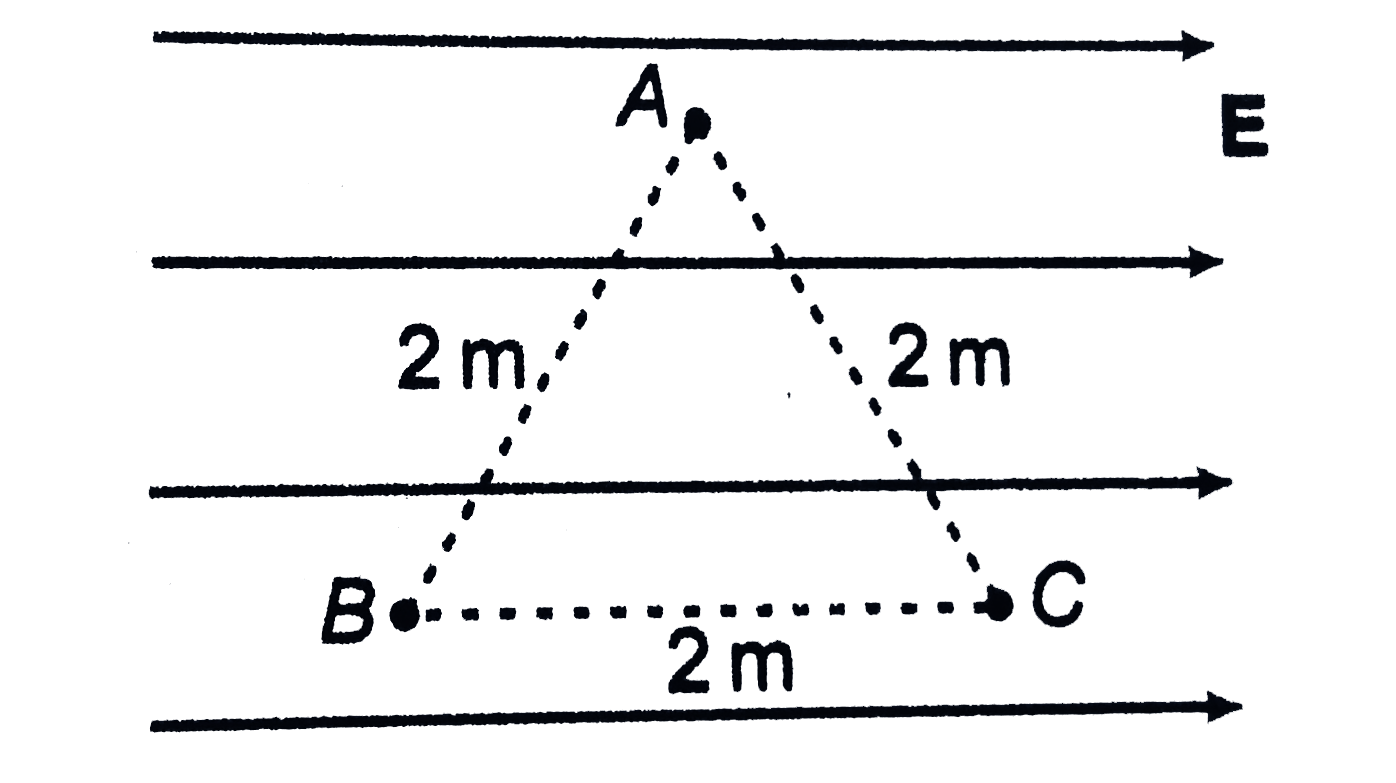
a. VA−VB , b. VB−VCView SolutionAn unchanged conductor of inner radius R1 and outer radius R2 contains a point charge q placed at point P (not at the centre) as shown in figure? Find out the following:
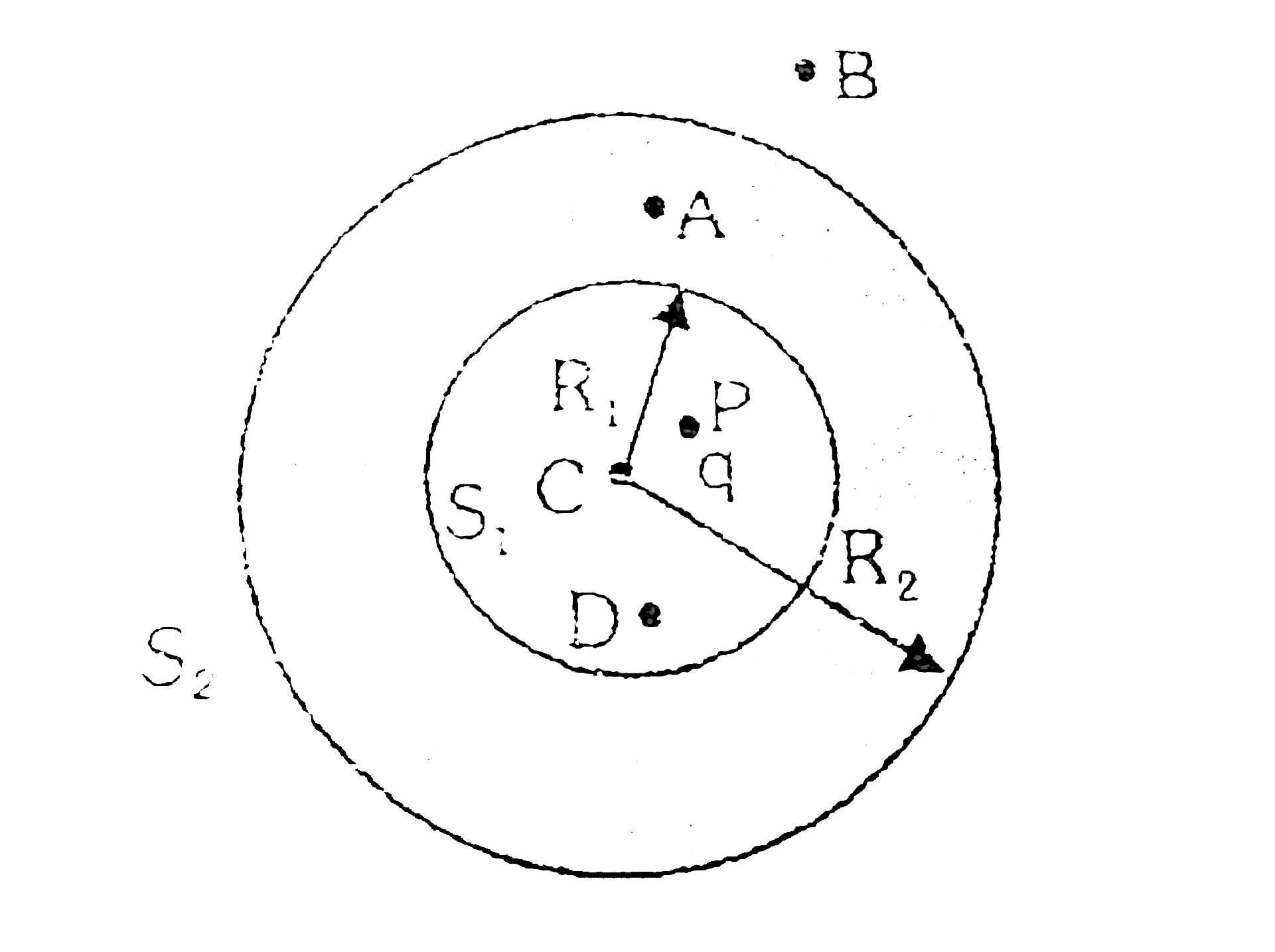
(i) VC (ii) VA (iii) VB (iv) EA (v) EB
(vi) force on charge Q if it is placed at BView SolutionA rod of length 3l rotated with an angular velocity ω as shown in figure. The unfiorm magnetic field B is into the paper. Find
(a) VA−VC (b) VA−VD
 View Solution
View SolutionFind the equivalent resistance of the network shown in the figure between the points A and B if
(i) VA>VB (ii) VA<VB
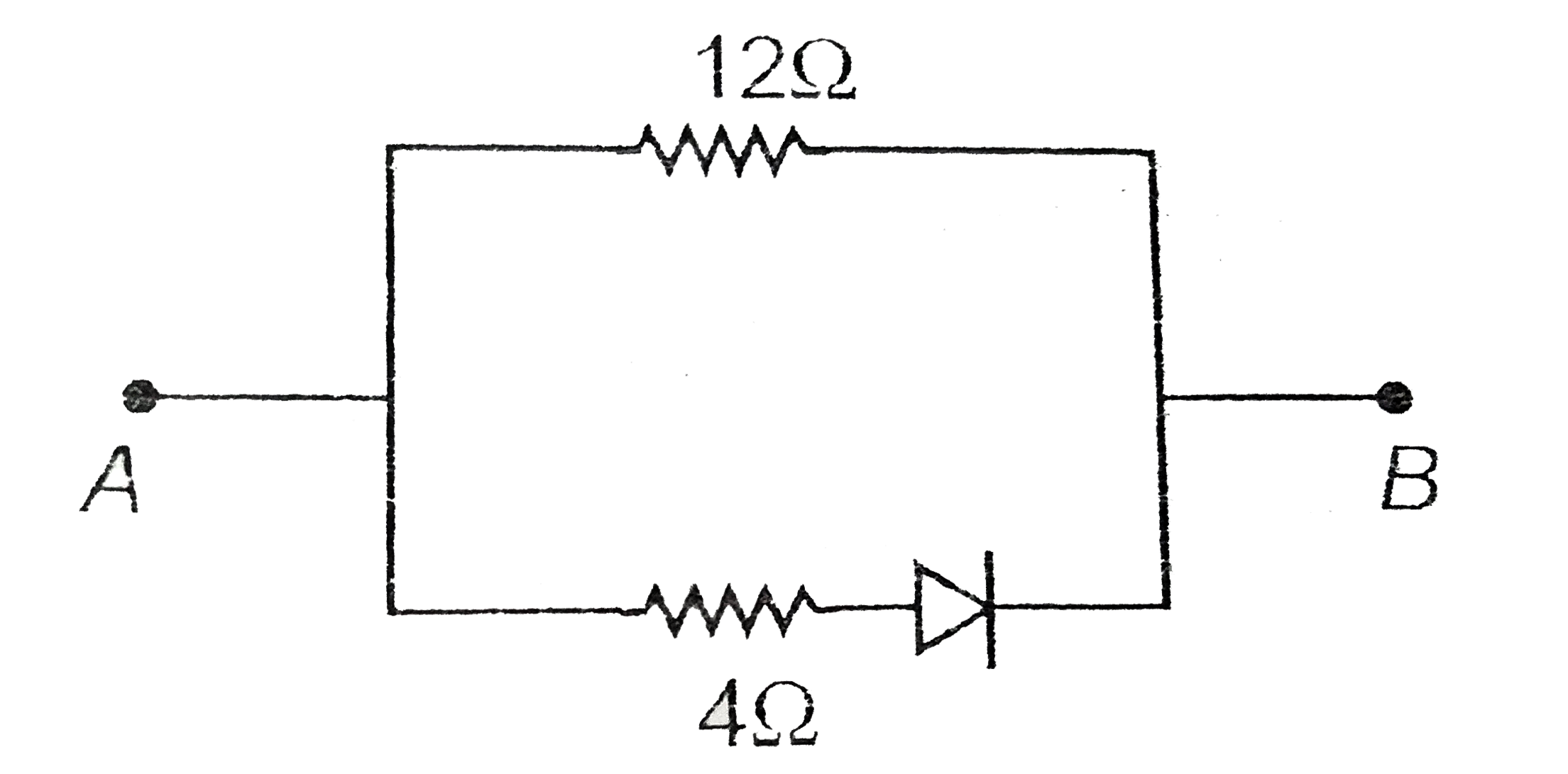 View Solution
View SolutionA hollow conducting sphere is placed in an electric field produced by a point charge placed at P as shown in figure.
Let VA,VB,VC be the potentials at points A,BandC respectively. Then
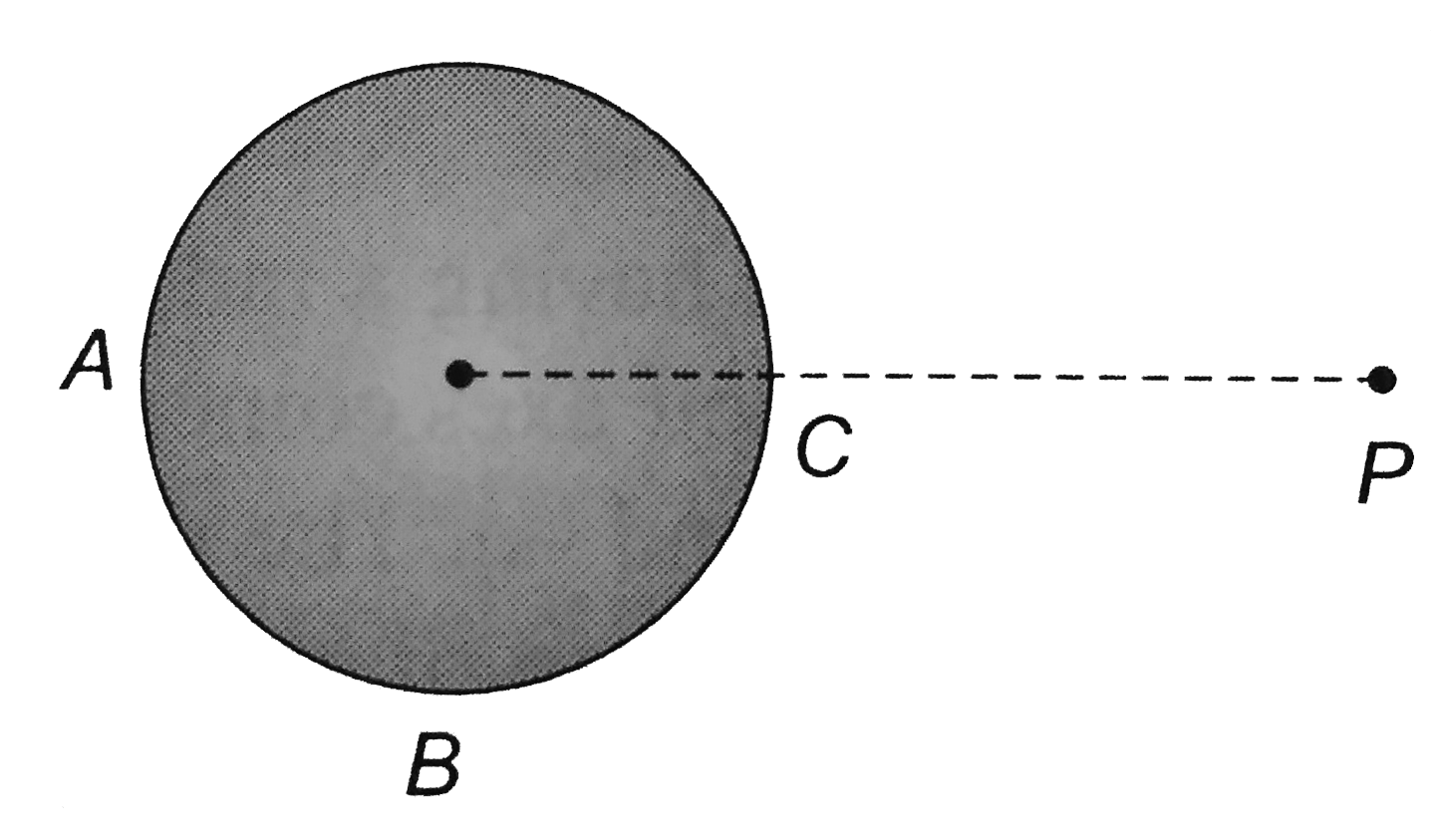 View Solution
View SolutionA hollow conducting sphere is placed in an electric field produced by a point charge placed at P as shown in figure.
Let VA,VB,VC be the potentials at points A,BandC respectively. Then
 View Solution
View SolutionA hollow conducting sphere is placed in an electric field produced by a point charge placed at P as shown in figure.
Let VA,VB,VC be the potentials at points A,BandC respectively. Then
 View Solution
View SolutionA non-conducting wire is bent into a semi-circle of radius R and a charge +Q is uniformly distributed over it as shown in the figure. Find the ratio (VAEA) of the potential (VA) to the magnitude of the electric field (EA), both evaluated at the other end A of diameter AB that bisects the wire (as shown in the figure)
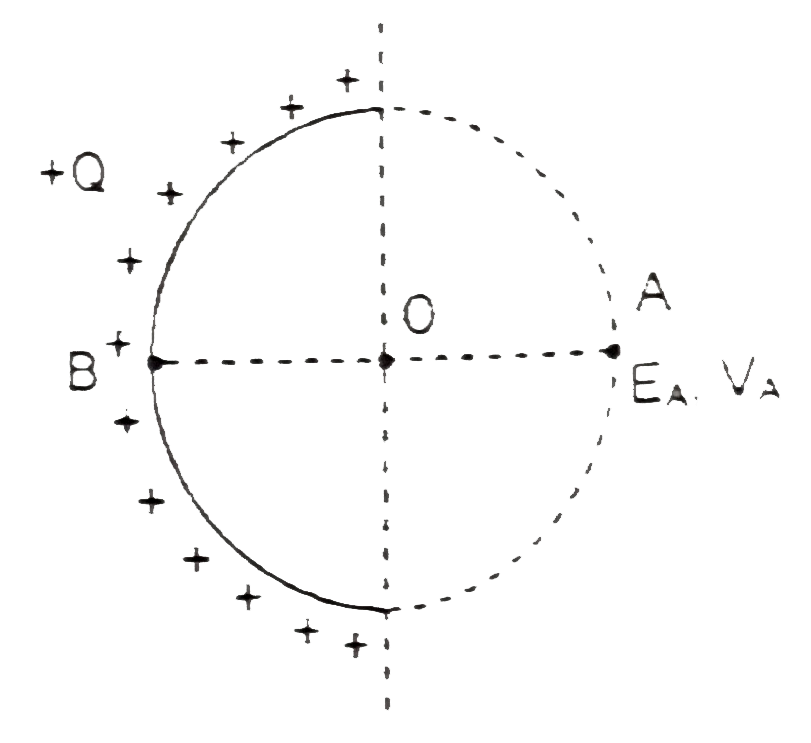 View Solution
View SolutionA uniform electric field is along x-axis. The potential difference VA−VB=10V is between two points A (2m, 3m) and (4m, 8m). Find the electric field intensity.
View Solution

